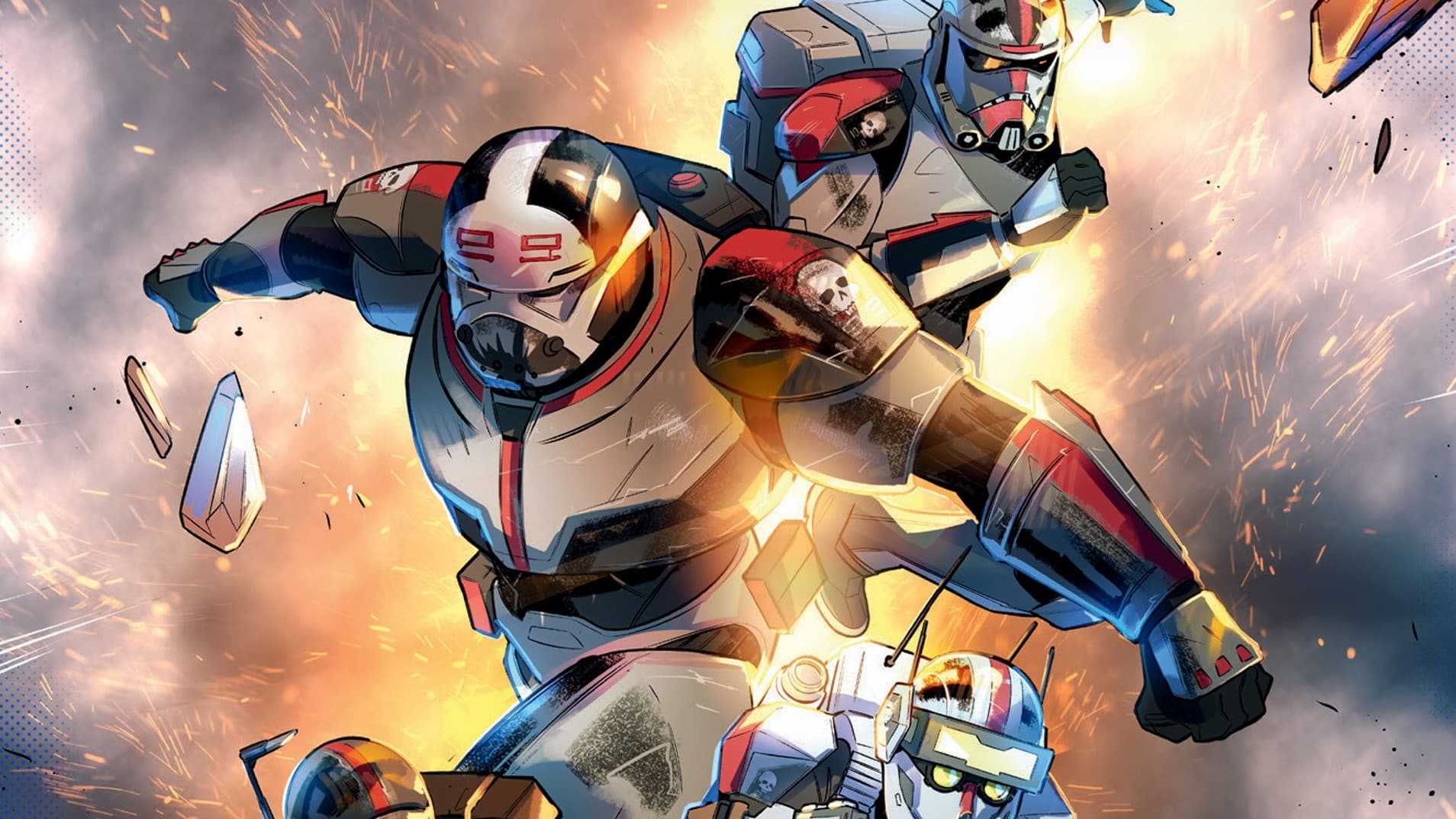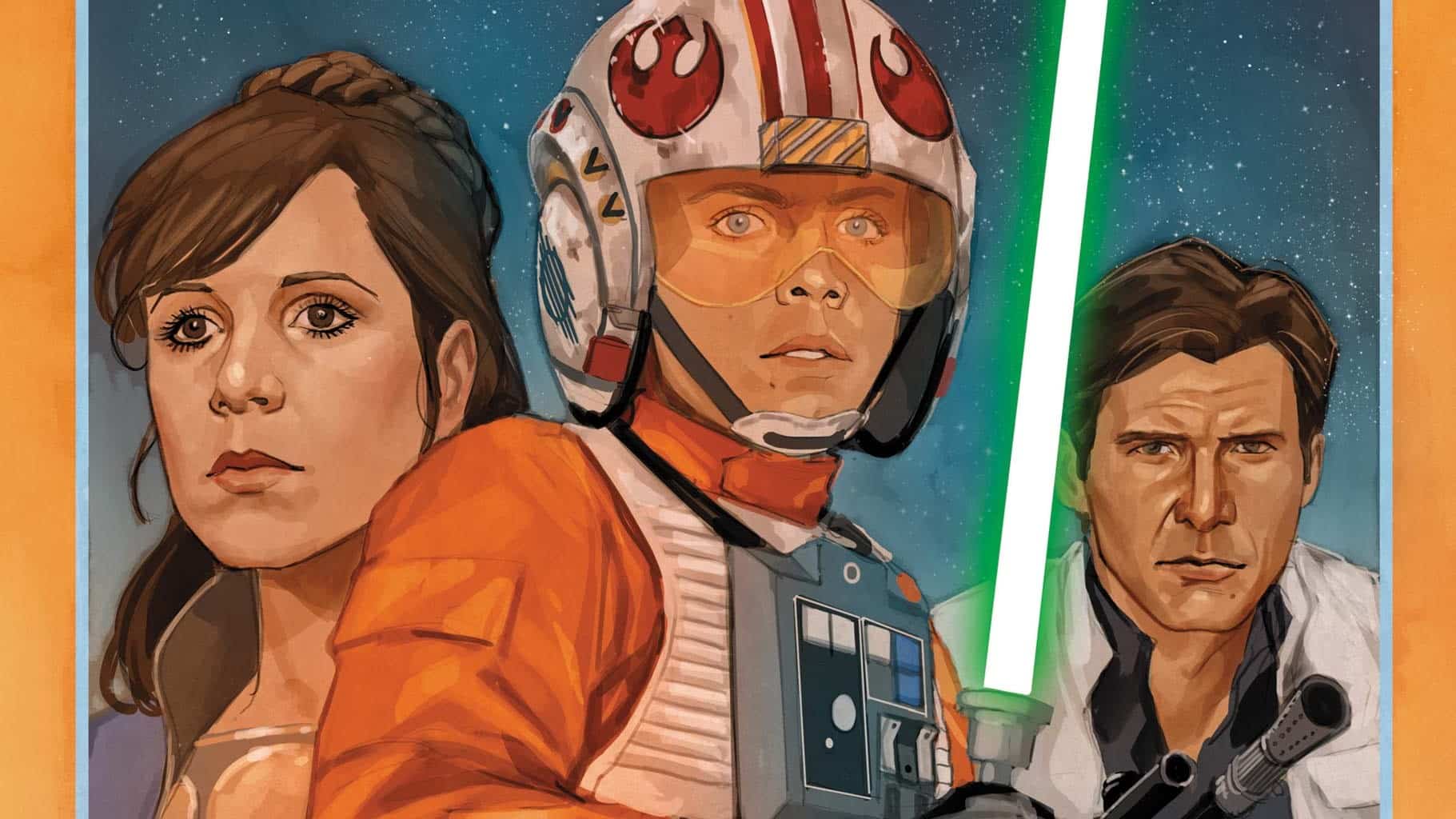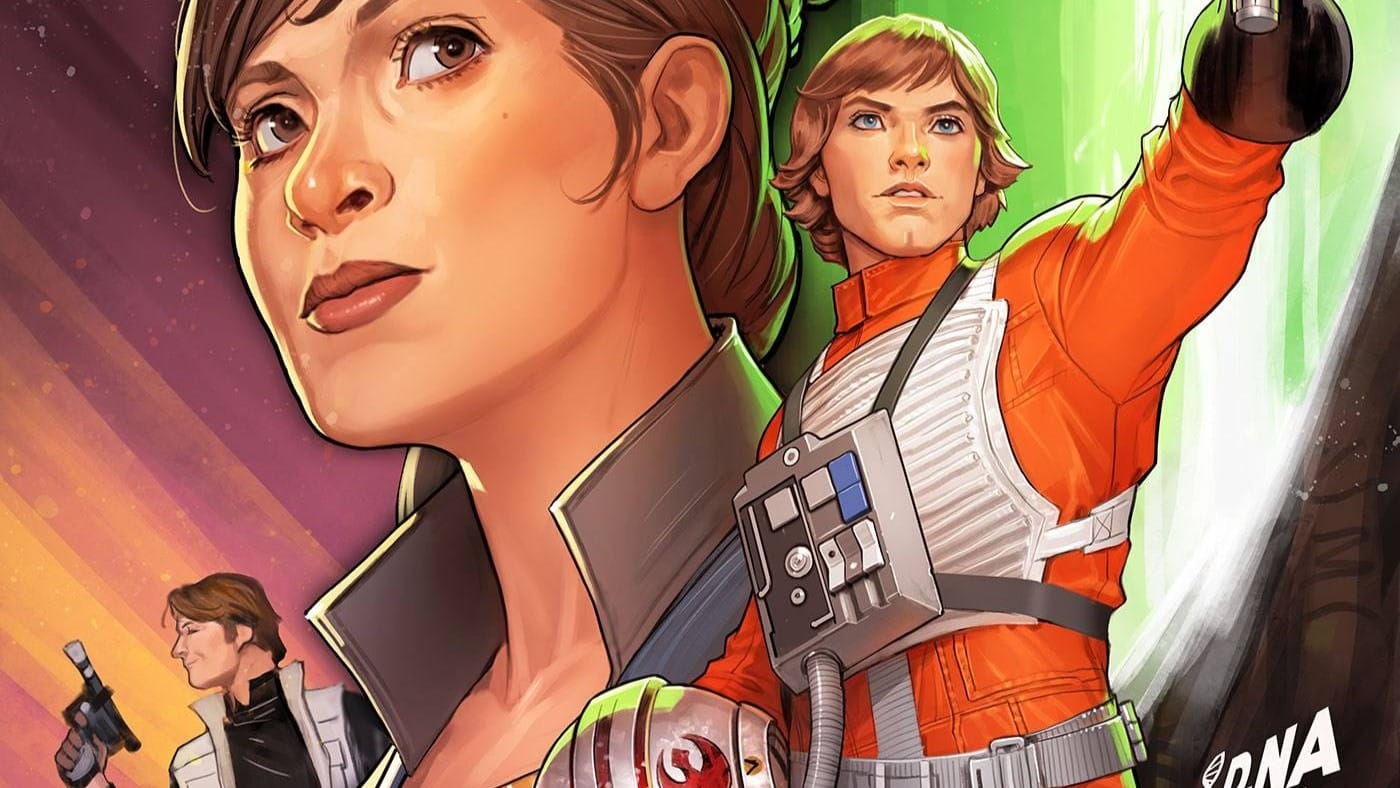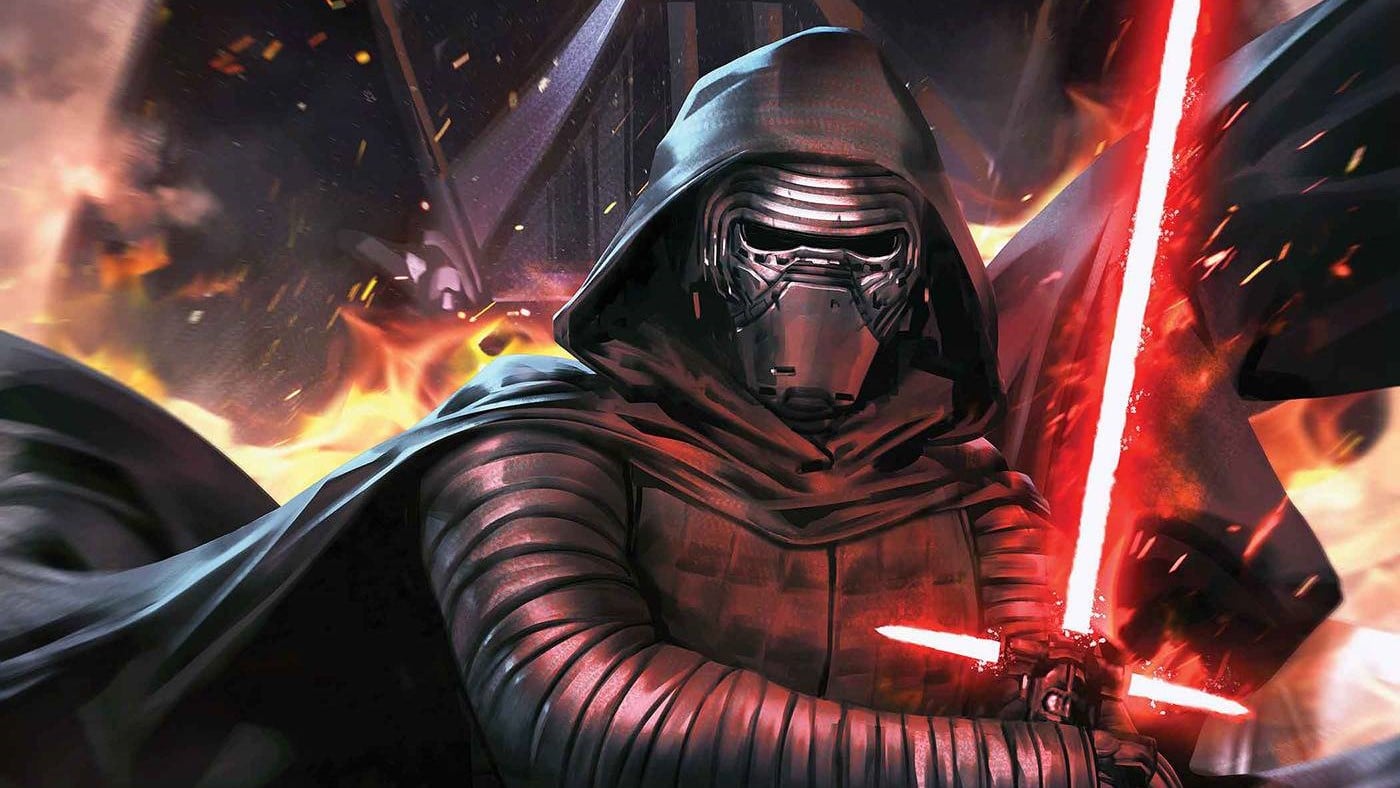The Bad Batch is back for another high-octane adventure set during the Clone Wars. Their mission: to hunt down the mysterious Separatist ghost agent who executed a daring heist on Coruscant. The thief’s trail leads Hunter, Wrecker, Crosshair and Tech to the seediest corners of the galaxy, where kingpins and thugs threaten the clones’ mission, and their lives. Have the Bad Batch met their match? Star Wars: Hyperspace Stories: The Bad Batch: Ghost Agents #1 is written by Michael Moreci, drawn by Reese Hannigan, inked by Elisabetta D’Amico, colored by Michael Atiyeh and lettered by Tyler Smith and Bobby Bradford for Dark Horse.
I recently had an illuminating conversation about “filler” in serialized TV. You know, the episodes that don’t further the broader plot in tangible ways, the self-contained ones, the oddball formal experiments or spotlights on secondary characters. To put on my old lady shawl for a moment, it struck me that when I was young, in the golden years of Buffy the Vampire Slayer, The X-Files or Star Trek: Deep Space Nine, filler was not a dirty word. I remember posters being actively disgruntled when Mulder and Scully put the vigorous pursuit of miscellaneous cryptids and freaks on the backburner to fuss about Krycek for a week — like, actively mad that we were taking a detour into seriality instead of checking in on what was weird in the backwoods of West Virginia or wherever!
Much has changed, and in an epoch of abbreviated episode orders and post-prestige emphasis on tight, dense plotting, I suppose it makes sense that filler has become a dirty word. Still, I miss it. I champion it. Filler can be beautiful, an opportunity to slow down and modulate the tempo of a narrative. When the DS9 crew takes a break from intense detantes with the Dominion to futz around with baseball or Vic Fontaine for an episode, the show sings. We get to know the world this story takes place in with a greater sense of granularity, we get to experience characters when they aren’t in acute moments of crisis. What we lose in go-go-go forward momentum we gain in a sense of getting to know a story, to feel ourselves at home in it. What’s The Lord of the Rings without Tom Bombadil? Just a lot of orcs hollering (or, to be fair, operatic and beautiful shots of the camera circling overhead as people meander across a mountain). Filler, or one-offs, or monster-of-the-week episodes, or whatever you want to call them, are a hill I’m OK dying on — and this extends to Star Wars. I’ll be the first on the frontlines insisting that The Acolyte should have had a 20-episode first season, with at least one bottle episode about Qimir getting his arm stuck in a vending machine.
Star Wars, from the moment we cut from the propulsive tempo and crisp, stark lines and colors of the Tantive IV to Luke’s slow, small life with his unfulfilling chores and his scuffed up beater of a hover-car, is about that granularity that comes from making time and space to dwell in little cul-de-sacs of attention, to follow characters patiently just for the pleasure of following them. For all that the animated series The Clone Wars (2008-20) and Rebels (2014-18) were occasionally interminable, they made the most of their generous runs — 133 and 75 episodes, respectively — to create a lot of space between the big lore moments and the dramatic ruptures in the status quo. When the apostate Jedi Ahsoka Tano’s arc culminates in a paroxysm of tragic loss in season seven, it hits all the harder because we’ve seen her grow from precocious child to haunted young adult in those one-offs as much as the “important” stories.
The Bad Batch, a three season spin-off of The Clone Wars that ran from 2021-24, never quite got that luxury of time and space. With a slim 47 episodes to work with, the series, which followed the adventures of a squad of genetically “defective” renegade clones in the early days of the Galactic Empire, attempted valiantly to balance arcs that advanced the trajectory of the Batch from their fugitive period to their eventual retirement with one-and-done episodes which foregrounded the opportunity to simply relish in their interpersonal dynamics and look at well-executed action set-pieces. Fittingly, I guess, for a story about a group of men with the gadfly lifespans of clone troopers, and their belated approach to something like peace as co-dads of the precocious girl-clone Omega, the show often felt as if it were evincing a yearning for extra time that wasn’t there — more time together, more time to get to know one another, to not be on the backfoot from a string of perpetual crises and separations. The final arc of season three, which ultimately sees the surviving Bad Batch clones settling into island-time and fatherhood and Omega, now a young woman, flying off to join the Rebellion, is about as poignant and tonally perfect as Star Wars has ever been — it is a truly, truly wonderful ending, and one that trades nicely on this motif of time spent together being fleeting.
So there’s a particular pleasure in the first issue of the somewhat unwieldily titled Star Wars: Hyperspace Stories: The Bad Batch: Ghost Agents #1, written by Michael Moreci with art by Reese Hannigan, Elisabetta D’Amico and Michael Atiyeh. The “Hyperspace Stories” line has been a bit of an odd beast since it replaced the existing “Star Wars Adventures” line as Dark Horse’s blanket branding for all-ages Star Wars comics. Like its predecessor, it initially focused on pleasantly drawn, neatly plotted one-shot stories featuring characters from all corners and eras of the setting — ideal for younger readers, or for parents eager to pluck something off the shelf without having to worry about monthly continuity. Moreci, a seasoned Star Wars writer with a substantial number of these one-issue stories to his name, is a sensible choice as Hyperspace Stories realigns itself as a series of longer standalone graphic novels, and, here, a five-part miniseries.
It might seem peculiar to talk up the virtues of tight, self-contained stories as a prelude to a story that is, indeed, five times longer than its predecessors. Ghost Agents, however, was a pleasant surprise in the extent to which it fulfilled the promise of “filler” at its best — it’s an excuse to spend time with well-defined, charismatic characters in a context which sheds light on their relationships more, presumably, than it will rattle the foundations of Star Wars as a setting.
The book takes place early in the Batch’s career, prior to their first appearance in The Clone Wars — this means we’re dealing with an iteration of the cast that has not been radicalized against the Empire, nor begun to muddle through what it means to be a clone, or a soldier, or a brother. It also, accordingly, focuses on the earliest configuration of the team — grizzled but fatherly super-tracker Hunter, the burly and boyish artillery maven Wrecker, taciturn friend-turned-traitor-turned-friend-again sniper Crosshair, and of course Tech, the only clone with nearsightedness and a prim Jude Law hairline (the group’s obligatory nerd). On their own, these are rote cartoon action hero archetypes, 1:1 isometric to the Teenage Mutant Ninja Turtles if one permits that Crosshair is cool but rude — and to be sure, the show, as it progresses, benefits from throwing in the haunted, pragmatic Echo and the aforementioned Omega.
Moreci takes this as an opportunity, though, to explore what these characters were like as younger, less experienced people, without the baggage and trauma they carry into their television appearances. They’re recognizably themselves — Moreci has a delightful ear for action-movie banter and nails the voice of each character — but a little inchoate, a little less cohesive. They grate against each other a bit more in missions, their repartee has a slightly pricklier edge — which is a nice, subtle index of how far they have to go from here.
The plot, so far, is largely a pretext to see these dynamics in action. Moreci drops us in in media res with a satisfyingly riotous cold open, in which we see the tail-end of a mission threatening to go haywire. Giant monsters are stirred into frenzies; refineries are blown up; Wrecker is bait; it feels familiar, but comfortably so — a sort of proof of concept in which Moreci and the very capable art team get to crack their knuckles and show how closely they can capture the show’s tone and tempo.
From there, we segue to a somewhat trickier plot, one in which nothing immediately avails itself as The Thing To Blow Up — which to our boys at this point in their careers thwarts their go-to playbook. Mace Windu (featuring a … close enough likeness to Samuel L. Jackson) summons them to Coruscant for an urgent assignment: a list of deeply embedded off-the-books spies within the Separatist chain of command (“ghost agents”) has been stolen, putting the lives of these agents, as well as their missions, in jeopardy. Fortunately, the thief’s getaway vehicle was damaged, leaving them ostensibly stranded on Coruscant. The Batch’s task is to find the thief, apprehend them and retrieve the stolen list before the culprit is able to secure some other means off-planet. The first complicating factor is that Coruscant is a massive ecumenopolis with a ludicrous-but-canon 3 trillion people, meaning there’s quite a lot of ground to cover. The second complicating factor is that, again, our heroes are at a point in their lives where solving problems without extensive collateral damage is still a little novel.
The rest of the issue is a breezy series of set-pieces in which the clones do pretty well at fighting and very poorly at everything else. Moreci makes the most of this not just for comedic effect (the cast’s half-assed attempt to go undercover is a cute bit) but as a way of underscoring one of the more unsettling undercurrents of The Clone Wars and The Bad Batch. These seemingly battle-hardened and bad-ass men are just a few years old, raised among other clones before being schlepped off to war. In a lot of ways, beneath the buzz cuts and scars and chic headbands are naive boys.
It’s a nice balancing act — the Batch never comes off as inept or incompetent, but Moreci comes up with a fun array of situations in which they’re plausibly simply out of their element. A simple undercover intel-gathering stop-off at a bar descends into threats (albeit very cool threats); the gang gets trounced by fan-favorite bounty-hunter Embo and his dog, who are simply better at working as a team; their quarry escapes, all the tricks and stratagems honed on the battlefront just not quite right for fighting in a crowded city thick with civilians. It’s a great way to put our heroes on the backfoot while still giving each of them moments to pull off a slick little stunt, or deliver a laconic one-liner, or make a clever deduction.
The issue ends with them discovering that the nefarious Pyke Syndicate, the clan of spice-trafficking catfish gangsters who memorably proved their bad guy bonafides in The Clone Wars, Solo and The Book of Boba Fett, are wrapped up in the whole affair, with a trail of breadcrumbs leading to “one of the most dangerous systems in the galaxy” — Kessel.
As I noted at the outset, this all strikes a sweet spot — the stakes are high enough to be interesting, with enough complications to make the challenges facing our protagonists feel real, but not so high as to detract from the central focus on just watching the cast interact. We know who wins the Clone Wars — we know Embo, and the Bad Batch, and Mace Windu, and the Pykes, and Embo’s magic dog, and so on, make it to the end of the war (or close to the end of the war — RIP Mace Windu) intact. The urgency of the narrative is displaced entirely onto the shoulders of the characters — the reader can sit back and relax in some degree of confidence that the status quo of the setting is not being primed for a drastic upset. The cameos are interesting and additive without slowing things down (readers unfamiliar with Embo can read him as a generic green mercenary without losing anything), and the script deftly establishes who our protagonists are and how they relate to one another without requiring a clumsy info-dump.
Reese Hannigan’s pencils are similarly at their best when they’re evoking a sense of lived-in space, such as a subway sequence in which our heroes melt into a tableau of alien commuters. The story isn’t taking us anywhere previous Star Wars stories haven’t touched on, but these settings feel interestingly rich with texture and detail, inviting the reader to linger.
There are a few moments where crowd scenes are conspicuously heavy with amorphous blob people, and the likenesses of characters are occasionally a little wonky (I think flatter colors might have helped capture the look of the cartoon), but Hannigan pulls off a number of impressive sequences — the fight scenes are clear and dynamic, and there’s a lovely sense of motion to both the loud and the quiet scenes, with a lot of thoughtful, revealing choices in posing and staging characters.
Ghost Agents #1, then, feels like precisely what a robust all-ages Star Wars line should be aiming for — a narrative straightforward and accessible enough for new or younger fans, a generous allotment of cameos and continuity nods for readers into that sort of thing, and a solid, satisfying grasp on pacing, plotting and characterization. If it’s “filler,” it’s filler in the best, most expansive sense — don’t mistake its modest stakes and emphasis on character beats as a lack of ambition. Like a lot of Dark Horse’s Star Wars output, I fear that Ghost Agents risks flying under the radar of many fans, which would be a shame. Moreci, Hannigan and the rest of the art team have produced a book well worth looking into.
Buy Star Wars: Hyperspace Stories: The Bad Batch: Ghost Agents #1 here. (Disclaimer: As an Amazon Associate, ComicsXF may earn from qualifying purchases.)

Holly Raymond
Holly Raymond is a writer and professor who lives in Vermont with her wife and her dog, King Francis.





